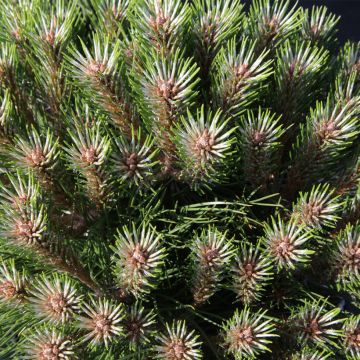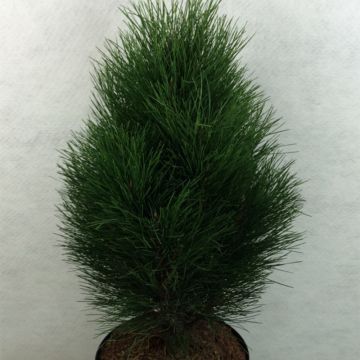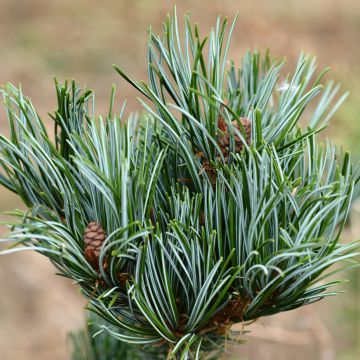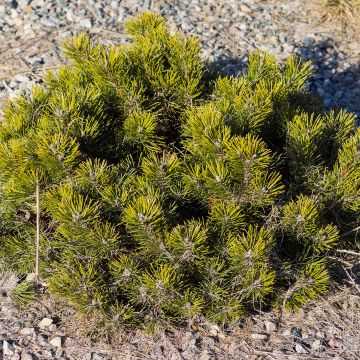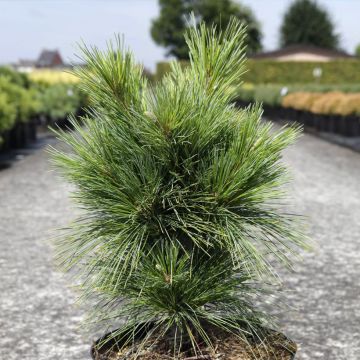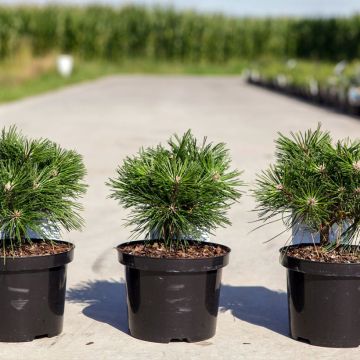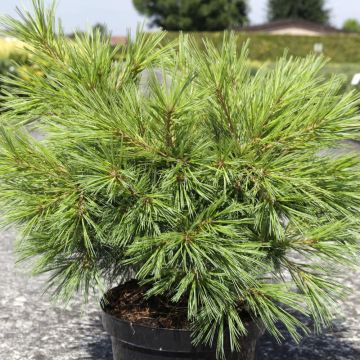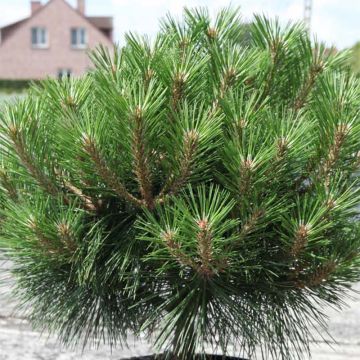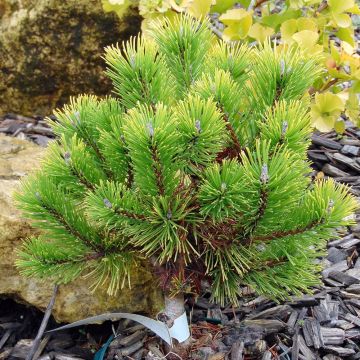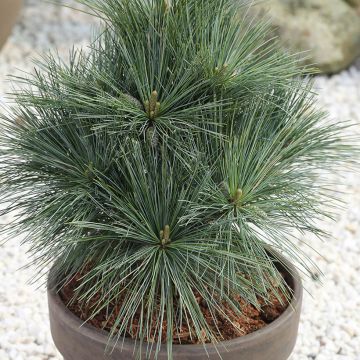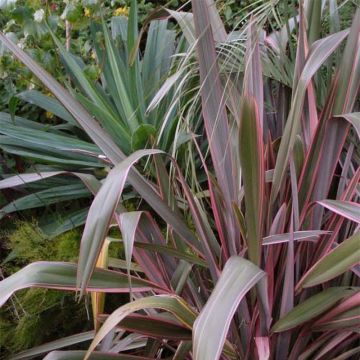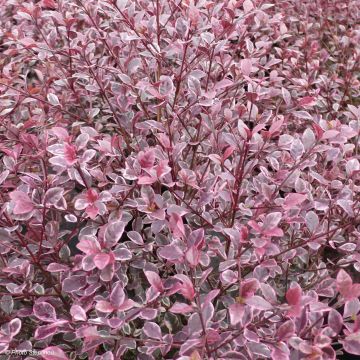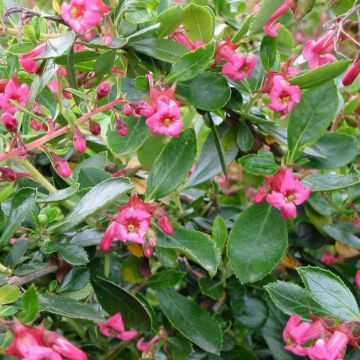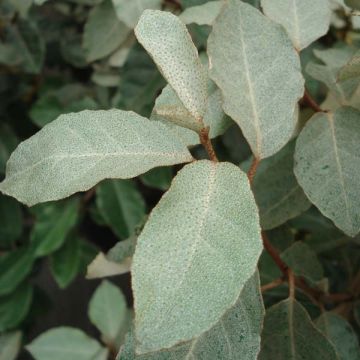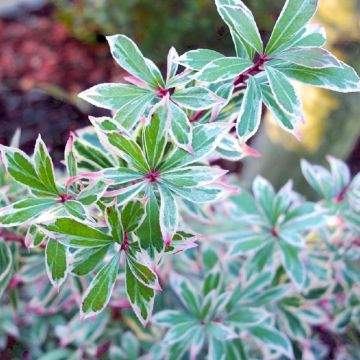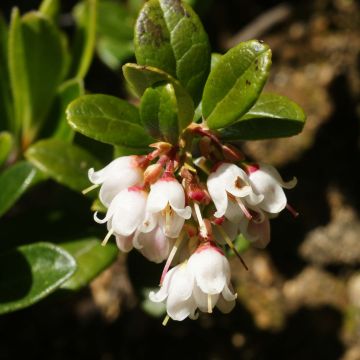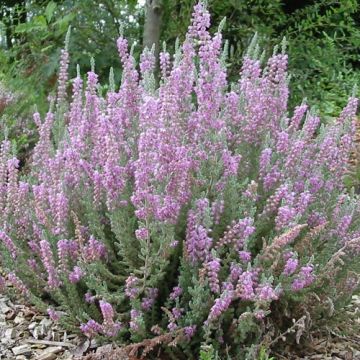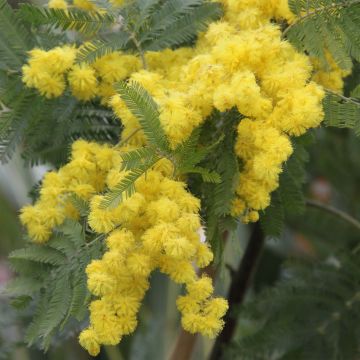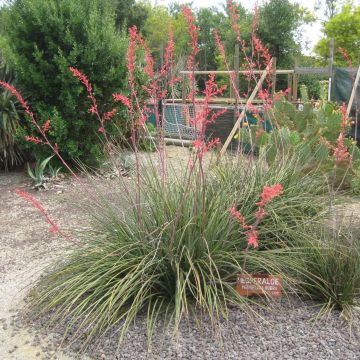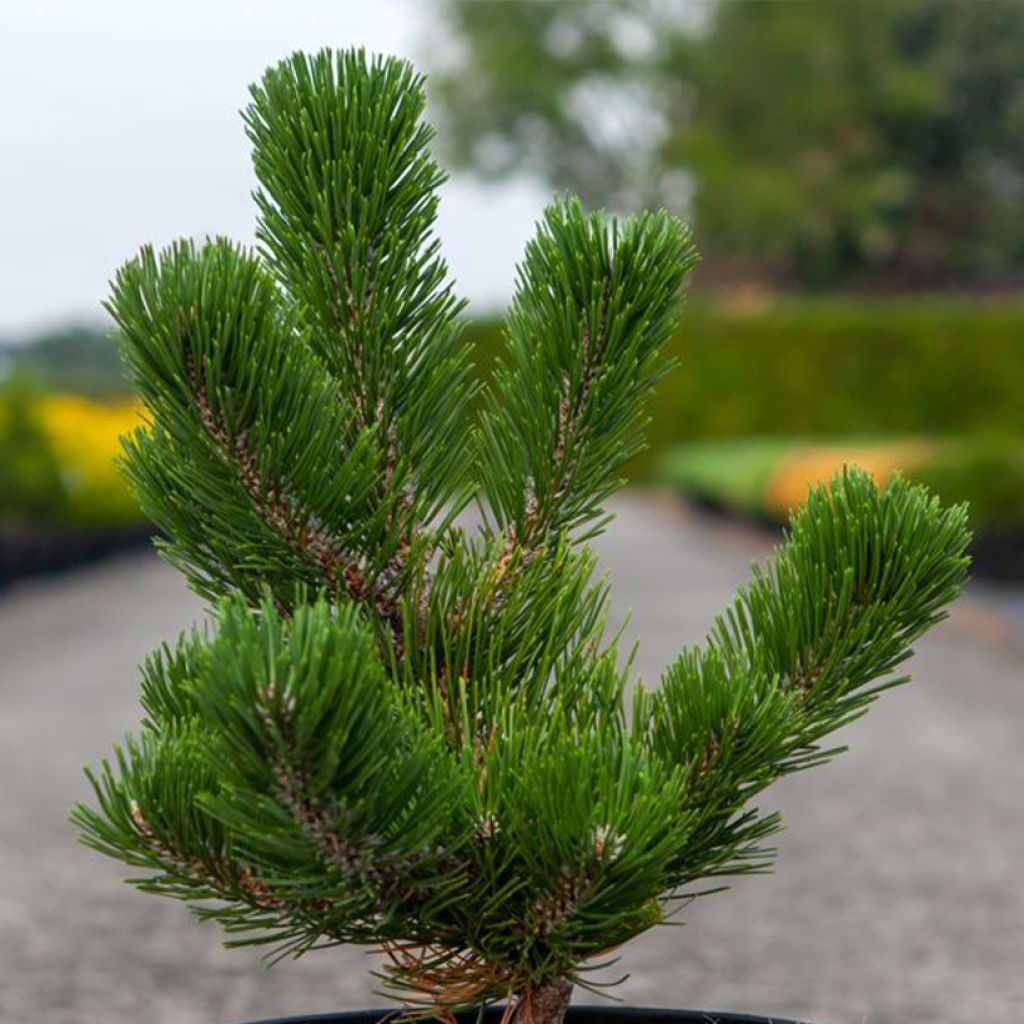

Black pine - Pinus nigra Oregon Green
Black pine - Pinus nigra Oregon Green
Pinus nigra Oregon Green PBR
Black Pine, Austrian Pine
Subject arrived in very good condition. Planted quickly in the sun and watered regularly. But did not tolerate the Toulouse sun. All brown and little hope of seeing it green again.
Patrick, 01/09/2024
This item cannot be shipped to the selected country
Delivery charge from €5.90
Delivery charge from €5.90
Delivery to Corse prohibited
More information
Schedule delivery date,
and select date in basket
This plant carries a 24 months recovery warranty
More information
We guarantee the quality of our plants for a full growing cycle, and will replace at our expense any plant that fails to recover under normal climatic and planting conditions.
From €5.90 for pickup delivery and €6.90 for home delivery
Express home delivery from €8.90.
From €5.90 for pickup delivery and €6.90 for home delivery
Express home delivery from €8.90.
Delivery to Corse prohibited: UE law prohibits the import of this plant from mainland France to Corse as part of the fight against Xylella fastidiosa. Please accept our sincere apologies.
More information
Does this plant fit my garden?
Set up your Plantfit profile →
Description
The 'Oregon Green' Black Pine is a horticultural variety of Black Pine selected for its unique aesthetic. Its dark green needles, densely arranged like sleeves around the branches, give it a bushy appearance. It is particularly remarkable for its upright, white young shoots, which are extremely decorative. Like the species, it is a very cold-resistant tree also resistant to air pollution and coastal winds, and capable of adapting to various types of well-drained soils. Smaller in size than the typical Black Pine, it is well-suited for small contemporary or Japanese gardens.
Pinus nigra, species of the Black Pine, is a conifer that naturally grows in Europe, Asia Minor, and North Africa. In such a vast area, different subspecies adapted to their local conditions have developed. Three main groups can be distinguished: the subspecies salzmanii in France, Spain, southern Italy, and North Africa; laricio in the Mediterranean (Corsican and Calabrian Pine); and nigra from Austria to Crimea and Turkey.
Based on this important genetic background, numerous horticultural varieties have been selected over time. 'Oregon Green' was originally selected as a seedling in the United States by Morris Van Meter at his nursery in Boring, Oregon, in the early 1990s. It stands out for its upright branches covered with shiny dark green needles arranged in dense sleeves. These needles persist on the tree for 3 to 5 years before renewing. This conifer is extremely decorative in spring when new shoots emerge. These shoots are vertical and have a whitish colour that contrasts with the dark mass of mature foliage. During this season, the conical and pyramidal shape of the tree evokes a chandelier covered in candles. These shoots later turn green as they spread out, while the needles appear.
With a moderate growth rate, this 'Oregon Green' Pine grows 30 to 40cm (15.7in) per year, reaching a height of about 3m (9.8ft) in ten years and 5 to 6m (19.7ft) at maturity, with a width of 3 to 4m (13.1ft). Much more compact than the species, it retains all its adaptability qualities. It adapts to almost all types of soils, including chalky or dry soils. Extremely cold-resistant, withstanding temperatures as low as -30°C (-22°F), its well-developed taproot allows it to tolerate dry conditions once established.
Its short trunk and relatively irregular growth give it a unique appearance, making the Oregon Green Pine suitable for shaping into a specific form. It is therefore perfect for contemporary gardens, alongside rocks, or slate, where its architecture will be highlighted, as well as for alpine or Japanese gardens with its slightly wild or Japanese aspect. It is best planted as a solitary tree to showcase its architectural habit with some space around it. In a Japanese-style garden, it can be paired with Japanese maples, such as Acer palmatum 'Red Pygmy' with finely dissected leaves, or Nandina domestica 'Obsessed Seika' (Sacred Bamboo), two shrubs that take on multiple shades depending on the season.
Report an error about the product description
Black pine - Pinus nigra Oregon Green in pictures
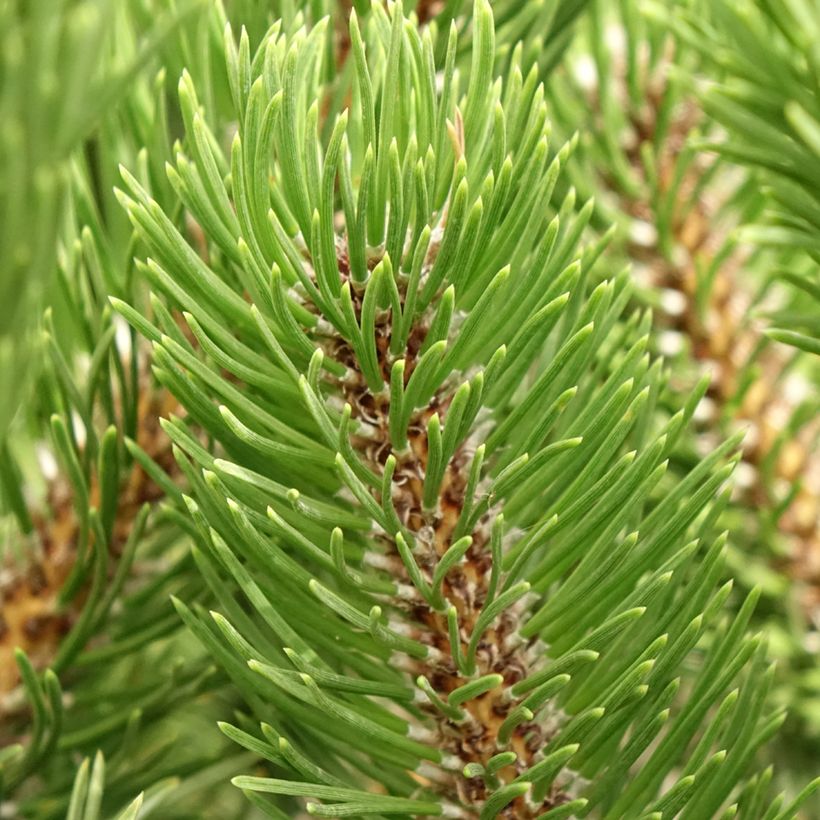

Plant habit
Foliage
Botanical data
Pinus
nigra
Oregon Green PBR
Pinaceae
Black Pine, Austrian Pine
Cultivar or hybrid
Other Pinus - Pine
Planting and care
The 'Oregon Green' Black Pine is capable of adapting to different types of soils, even dry and moderately chalky ones, provided they are sufficiently well-draining. Choose a location where it will be well showcased for its original architecture, each individual developing a unique form. Soak the root ball in a bucket of water before planting. Dig a hole about 60cm (23.6 in) in diameter to loosen the soil and facilitate rooting. In sandy soil, you can add compost to the existing soil to improve water retention and facilitate establishment. Water well after planting and during the first two summers. This conifer develops a tap root that allows it to reach deep water sources and withstand drought conditions.
Planting period
Intended location
Care
-
, onOrder confirmed
Reply from on Promesse de fleurs
Evergreen shrubs
Haven't found what you were looking for?
Hardiness is the lowest winter temperature a plant can endure without suffering serious damage or even dying. However, hardiness is affected by location (a sheltered area, such as a patio), protection (winter cover) and soil type (hardiness is improved by well-drained soil).

Photo Sharing Terms & Conditions
In order to encourage gardeners to interact and share their experiences, Promesse de fleurs offers various media enabling content to be uploaded onto its Site - in particular via the ‘Photo sharing’ module.
The User agrees to refrain from:
- Posting any content that is illegal, prejudicial, insulting, racist, inciteful to hatred, revisionist, contrary to public decency, that infringes on privacy or on the privacy rights of third parties, in particular the publicity rights of persons and goods, intellectual property rights, or the right to privacy.
- Submitting content on behalf of a third party;
- Impersonate the identity of a third party and/or publish any personal information about a third party;
In general, the User undertakes to refrain from any unethical behaviour.
All Content (in particular text, comments, files, images, photos, videos, creative works, etc.), which may be subject to property or intellectual property rights, image or other private rights, shall remain the property of the User, subject to the limited rights granted by the terms of the licence granted by Promesse de fleurs as stated below. Users are at liberty to publish or not to publish such Content on the Site, notably via the ‘Photo Sharing’ facility, and accept that this Content shall be made public and freely accessible, notably on the Internet.
Users further acknowledge, undertake to have ,and guarantee that they hold all necessary rights and permissions to publish such material on the Site, in particular with regard to the legislation in force pertaining to any privacy, property, intellectual property, image, or contractual rights, or rights of any other nature. By publishing such Content on the Site, Users acknowledge accepting full liability as publishers of the Content within the meaning of the law, and grant Promesse de fleurs, free of charge, an inclusive, worldwide licence for the said Content for the entire duration of its publication, including all reproduction, representation, up/downloading, displaying, performing, transmission, and storage rights.
Users also grant permission for their name to be linked to the Content and accept that this link may not always be made available.
By engaging in posting material, Users consent to their Content becoming automatically accessible on the Internet, in particular on other sites and/or blogs and/or web pages of the Promesse de fleurs site, including in particular social pages and the Promesse de fleurs catalogue.
Users may secure the removal of entrusted content free of charge by issuing a simple request via our contact form.
The flowering period indicated on our website applies to countries and regions located in USDA zone 8 (France, the United Kingdom, Ireland, the Netherlands, etc.)
It will vary according to where you live:
- In zones 9 to 10 (Italy, Spain, Greece, etc.), flowering will occur about 2 to 4 weeks earlier.
- In zones 6 to 7 (Germany, Poland, Slovenia, and lower mountainous regions), flowering will be delayed by 2 to 3 weeks.
- In zone 5 (Central Europe, Scandinavia), blooming will be delayed by 3 to 5 weeks.
In temperate climates, pruning of spring-flowering shrubs (forsythia, spireas, etc.) should be done just after flowering.
Pruning of summer-flowering shrubs (Indian Lilac, Perovskia, etc.) can be done in winter or spring.
In cold regions as well as with frost-sensitive plants, avoid pruning too early when severe frosts may still occur.
The planting period indicated on our website applies to countries and regions located in USDA zone 8 (France, United Kingdom, Ireland, Netherlands).
It will vary according to where you live:
- In Mediterranean zones (Marseille, Madrid, Milan, etc.), autumn and winter are the best planting periods.
- In continental zones (Strasbourg, Munich, Vienna, etc.), delay planting by 2 to 3 weeks in spring and bring it forward by 2 to 4 weeks in autumn.
- In mountainous regions (the Alps, Pyrenees, Carpathians, etc.), it is best to plant in late spring (May-June) or late summer (August-September).
The harvesting period indicated on our website applies to countries and regions in USDA zone 8 (France, England, Ireland, the Netherlands).
In colder areas (Scandinavia, Poland, Austria...) fruit and vegetable harvests are likely to be delayed by 3-4 weeks.
In warmer areas (Italy, Spain, Greece, etc.), harvesting will probably take place earlier, depending on weather conditions.
The sowing periods indicated on our website apply to countries and regions within USDA Zone 8 (France, UK, Ireland, Netherlands).
In colder areas (Scandinavia, Poland, Austria...), delay any outdoor sowing by 3-4 weeks, or sow under glass.
In warmer climes (Italy, Spain, Greece, etc.), bring outdoor sowing forward by a few weeks.

































